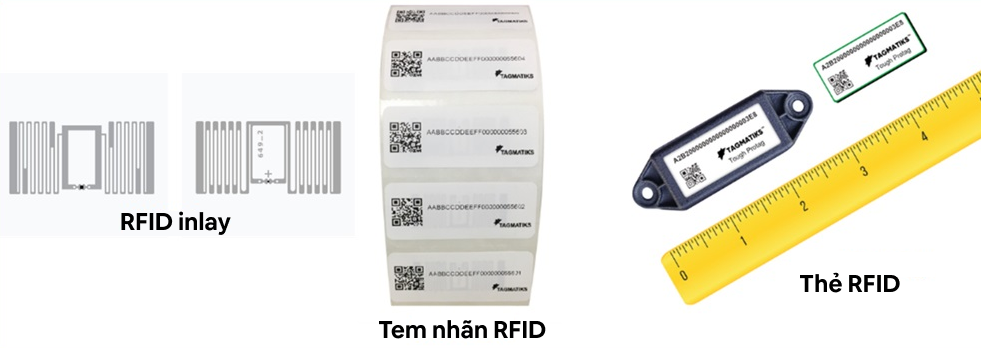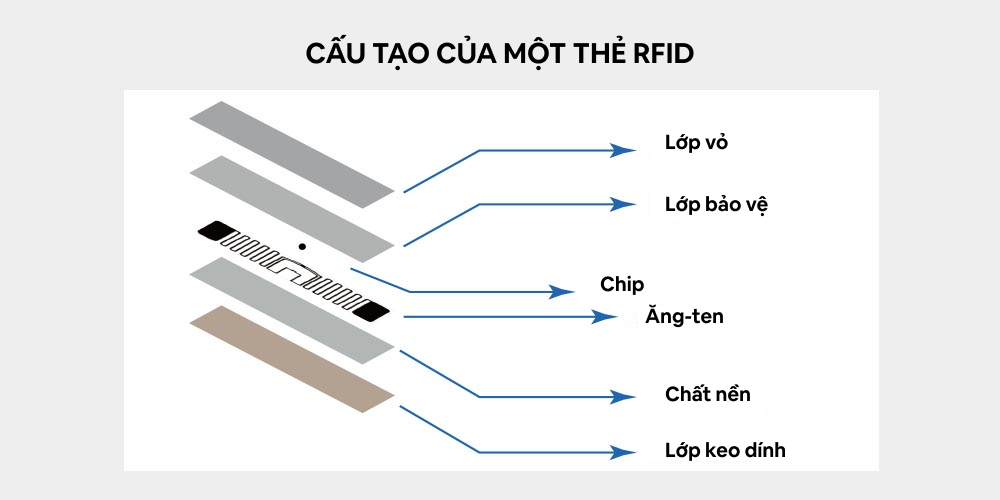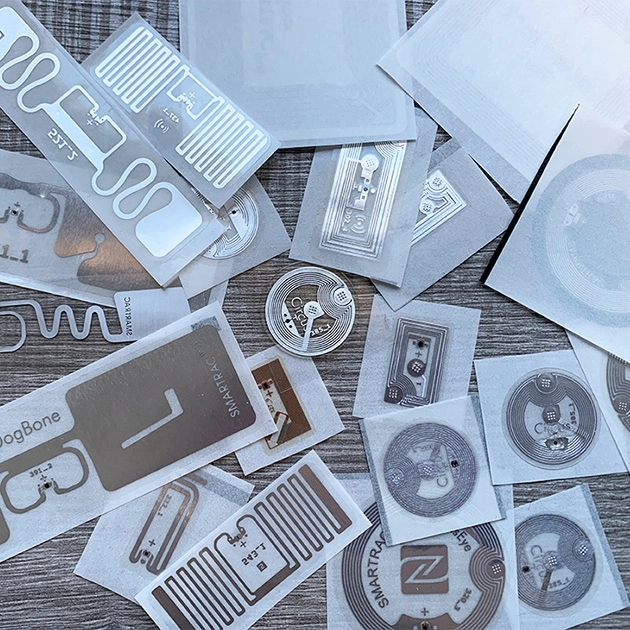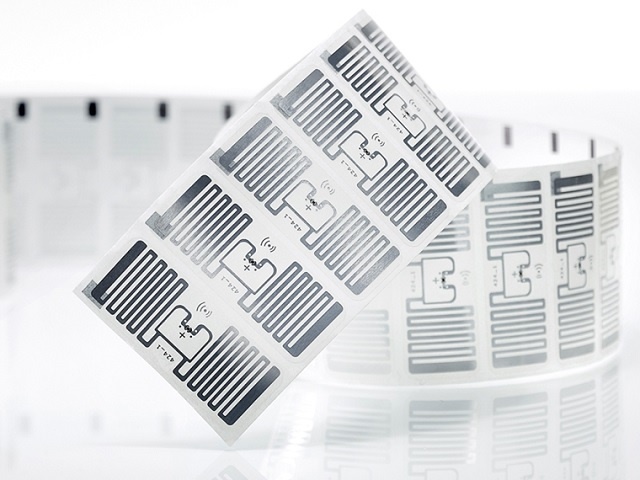Understanding RFID Tags: Types, Structure, and Key Differences

22/10/2022
What is an RFID tag?
In its simplest form, an RFID tag consists of two main components:
– An antenna, which is responsible for transmitting and receiving signals, and
– An RFID chip (also known as an integrated circuit, or IC), which stores the tag’s ID and other relevant information.
RFID tags are attached to assets or goods to enable tracking using RFID readers and antennas.
An RFID tag transmits data about an object—such as a product, asset, or animal—via radio waves to a reader-antenna system. The most common type of RFID tag does not contain a battery (unless it is an active tag). Instead, it receives energy from the radio waves emitted by the RFID reader. When the tag detects the signal from the reader or antenna, that energy powers the tag’s chip. The chip then encodes the desired information into the signal and sends it back to the reader/antenna.
Differences Between RFID Inlays, RFID Labels, and RFID Cards

RFID inlay is the functional core of an RFID label. It consists of the RFID chip and antenna, and it can be used independently by simply attaching it to the target asset. There are two types of inlays: dry inlays and wet inlays. Dry inlays require an additional adhesive layer to attach them to the desired surface, whereas wet inlays already come with adhesive backing.
RFID labels include an RFID inlay embedded on one side with an adhesive layer. These labels can be affixed to assets for the purpose of tracking, identification, and management.
RFID cards encapsulate an RFID inlay within a protective housing. Unlike labels, producing an RFID card requires securing the inlay inside a casing in a way that ensures it remains unobstructed to allow for uninterrupted signal transmission from the RFID reader.

There are hundreds of types of RFID labels and cards, each designed for specific uses, environments, and asset types. RFID tags can be categorized based on several criteria:
- Form factor: inlay, label, card, badge, hard tag
- Frequency type: LF, NFC, HF, UHF, BAP
- Environmental factors: water-resistant, heat-resistant, chemical-resistant
- Customizability: shape, size, encoding
- Functionality / Application: laundry tag, sensor tag, vehicle tag, high-memory tag
- Surface-specific materials: tags for metal, glass, or liquid-containing surfaces

Cost of RFID Tags
The price of RFID tags depends on the tag type and order quantity. The higher the quantity, the lower the unit cost. The more customized the tag (in terms of design, material, encoding, or durability), the higher the cost compared to standard off-the-shelf tags.
- RFID inlays typically range from 3,000 VND to 30,000 VND per unit.
- Hard tags (RFID cards) range from 20,000 VND to 100,000 VND per unit.
Key Questions When Selecting an RFID Tag
- What type of surface will the tag be attached to? Metal, plastic, wood, etc.
- What is the desired read range? Close range (a few centimeters) or long range (several meters)?
- Are there any size constraints? Does the tag need to fit within a specific space or form factor?
- What are the environmental conditions? Will the tag be exposed to high heat, extreme cold, dust, moisture, or physical impact?
- How will the tag be mounted? Adhesive backing, screws, zip ties, embedded into the object, etc.

Related Articles
- 1Gate’s RFID-Based Traceability & Anti-Counterfeiting System
- Hệ thống truy xuất nguồn gốc và chống giả 1Gate
- RFID Applications in Steel Manufacturing Plants
- Choosing RFID Tags for Metal Surfaces – What You Need to Know
- UNIQLO Implements RFID on a Global Scale
- Walmart, RFID, and the New Retail Strategy
- Ứng dụng RFID trong nhà máy sắt thép
- Lựa chọn thẻ RFID gắn trên kim loại- Những điều cần lưu ý
- UNIQLO áp dụng RFID trên phạm vi toàn cầu





